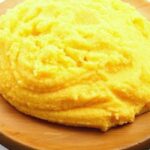Wollmatten, or wool mats as they are known in English, are more than just soft floor coverings. They represent an interesting intersection of tradition, chemistry, practicality, and lifestyle design. While many people think of them only as decorative mats or carpets, the material composition of wollmatten gives them properties that extend far beyond aesthetics. The unique structural and chemical nature of wool fiber allows these mats to serve roles in insulation, filtration, design, and even in certain industrial settings.
In this article, we’ll explore what wollmatten are, their origins, why wool as a natural fiber is so special, and how these mats have been adapted in different contexts. Along the way, we’ll also break down some of the scientific principles that make them stand out.
What Are Wollmatten?
At its core, a wollmatte is a mat constructed primarily from wool fibers. These fibers are typically pressed, woven, or felted together to form a dense, resilient surface. Depending on the method of production, the mat can be soft and decorative or dense and industrial-grade. The word “matte” itself refers to something flat, cushioned, and durable, while “woll” obviously refers to wool.
Traditionally, these mats have been hand-crafted by communities across Europe and Asia, where sheep wool was readily available. Today, modern production can involve machine pressing, chemical treatment, and even blending wool with synthetic fibers for enhanced durability.
But to really understand wollmatten, we have to look closely at the fiber they’re made from: wool.
The Chemistry of Wool
Wool is not just another fabric—it is a protein-based fiber, primarily composed of keratin. Keratin is the same protein that makes up human hair and nails, but in sheep wool, its molecular arrangement is different, giving it unique physical and chemical properties.
Each wool fiber has a complex structure consisting of three layers:
- Cuticle – The outer layer made of overlapping scales, which makes wool slightly water-repellent and able to resist dirt.
- Cortex – The middle layer, rich in keratin, which provides elasticity and strength.
- Medulla – Present in some thicker fibers, it acts as a hollow core that helps in insulation.
One of the key chemical characteristics of wool is its ability to absorb and release moisture without feeling wet. This property is called hygroscopicity, and it is a major reason why wollmatten can regulate humidity in indoor spaces.
Additionally, wool is naturally flame-resistant due to its high nitrogen and water content. Unlike synthetic fibers that melt and drip when burned, wool chars and extinguishes itself, which makes wollmatten safer to use in households and public spaces.
Historical Roots of Wollmatten
The concept of using wool as a base for mats and rugs dates back thousands of years. Archaeological evidence from Central Asia and the Middle East shows that nomadic tribes used felted wool mats as both floor coverings and tent insulation. The technique of felting, where wool fibers are compressed under heat, moisture, and pressure, has been known for centuries.
In Germanic regions, the use of wollmatten became particularly common during colder seasons. Wool’s insulating properties made it ideal for lining floors, protecting feet from cold stone or wooden flooring. Over time, these mats became more decorative, featuring woven patterns, dyes, and embroidery.
Even today, in regions like Bavaria, Switzerland, and Austria, handmade wollmatten are considered valuable household items that combine practicality with cultural heritage.
Functional Advantages of Wollmatten
When we consider wool mats today, their uses extend far beyond tradition. Thanks to their unique chemistry and structure, wollmatten provide several advantages:
1. Thermal Insulation
Wool traps air between its fibers, creating an effective natural barrier against heat loss. A wollmatte placed on the floor prevents cold from seeping upward, which is particularly useful in colder climates.
2. Moisture Regulation
Due to wool’s hygroscopic nature, a wollmatte can absorb up to 30% of its own weight in moisture without feeling damp. This property makes these mats useful in homes where indoor humidity fluctuates.
3. Sound Absorption
Wool fibers have a crimped, spring-like structure that helps in dampening sound waves. A room with wollmatten tends to feel quieter and more acoustically balanced compared to one with synthetic mats.
4. Fire Resistance
Because of their protein chemistry, wollmatten resist flames naturally. This is one reason they are used in public spaces, schools, and sometimes even laboratories where fire safety is a priority.
5. Durability and Elasticity
Unlike cotton or synthetic mats that wear out quickly, wool mats maintain their structure over years of use. Their keratin-based structure gives them elasticity, allowing fibers to bend and return to shape without breaking.
Wollmatten in Interior Design
From a design perspective, wollmatten offer both functionality and aesthetic appeal. They come in a variety of styles, from plain felted designs to intricately woven patterns that resemble rugs. The natural colors of wool—creams, browns, and grays—are often left untreated, but dyes can also be used for vibrant finishes.
Interior designers often recommend wool mats because they add warmth and texture to a space while also being eco-friendly. Unlike synthetic rugs that release microplastics, wollmatten are biodegradable and sustainable.
Industrial and Specialized Applications
Beyond homes, wollmatten have surprising applications in industrial and scientific fields:
- Filtration: Compressed wool mats can act as natural filters for air and water, thanks to their ability to trap particles.
- Insulation Panels: In construction, thick wool mats are sometimes used in wall or roof insulation because of their thermal properties.
- Automotive Use: Certain car manufacturers use wool mats for luxury interiors, both for comfort and sound absorption.
- Protective Padding: Due to its cushioning effect, wool is also used in packaging delicate instruments or machinery.
These applications highlight that wollmatten are not just decorative—they are functional, adaptable, and highly relevant even in modern technology.
The Sustainability of Wollmatten
In today’s world where sustainability is a pressing concern, wollmatten stand out as an environmentally friendly choice. Wool is a renewable resource, as sheep produce a new fleece every year. Unlike synthetic mats made from petroleum-based plastics, wollmatten are biodegradable.
Additionally, wool production requires less energy than manufacturing synthetic fibers. Even when treated chemically for durability or moth resistance, wool remains one of the more eco-conscious materials available.
Recycling is also possible. Old wool mats can be repurposed into insulation material, felt products, or even composted since wool decomposes naturally, releasing valuable nutrients back into the soil.
Scientific Perspective: Why Wool Beats Synthetics
To appreciate the science, let’s compare wool mats to synthetic mats like polyester or nylon.
- Moisture Handling: Wool absorbs water vapor, while synthetics repel it, often causing static electricity.
- Flame Behavior: Wool chars and extinguishes itself, synthetics melt and drip.
- Decomposition: Wool biodegrades in soil within a few years; plastics can take centuries.
- Comfort: Wool maintains warmth even when damp, while synthetics lose insulation when wet.
Chemically, wool’s keratin structure is more adaptable and resilient than long chains of synthetic polymers. This explains why wollmatten last longer and offer more natural benefits.
Caring for Wollmatten
To maximize their lifespan, wool mats require proper care. Unlike synthetic mats that can be tossed in a washing machine, wollmatten need more delicate handling.
- Vacuum Regularly: To remove dust without damaging fibers.
- Spot Clean with Wool Detergents: Since wool is protein-based, regular alkaline detergents can damage its chemistry. Specialized wool detergents maintain fiber integrity.
- Avoid Excessive Sunlight: Direct exposure can cause fading and weakening of fibers.
- Moth Protection: Wool is prone to moth damage; natural repellents like cedar blocks help.
With the right care, wollmatten can last decades, making them an investment rather than a disposable household item.
Cultural Symbolism of Wollmatten
In many cultures, wool mats have symbolic value beyond their practical use. In parts of Central Asia, felted wool mats are decorated with traditional motifs representing nature, family, or spirituality. In German households, hand-crafted wollmatten are sometimes gifted as heirlooms, symbolizing warmth and protection.
Even in modern settings, giving someone a wollmatte can symbolize comfort, care, and a connection to tradition.
The Future of Wollmatten
As society becomes more environmentally conscious, the demand for natural, renewable, and sustainable materials is growing. Wollmatten are perfectly positioned within this movement. Their versatility allows them to fit into traditional households, modern minimalist apartments, and even high-tech industrial settings.
Research into wool treatments is also advancing. Scientists are developing eco-friendly methods to enhance moth resistance, stain resistance, and durability without using harsh chemicals. This innovation ensures that wollmatten will continue to evolve with modern needs.
Final Thoughts
Wollmatten may appear simple, but they are far from ordinary. They represent a fascinating fusion of tradition, material science, and sustainability. From the molecular structure of wool to the cultural heritage attached to these mats, every aspect tells a story of resilience and utility.
Whether you see them as decorative home items, practical insulators, or eco-friendly alternatives to synthetic mats, one thing is clear: wollmatten are here to stay. Their blend of chemistry, culture, and craftsmanship ensures that they will remain relevant in households and industries alike.
If you’ve never given much thought to a simple wool mat, perhaps now you’ll look at wollmatten differently—not just as floor coverings, but as a product of natural science and centuries of human innovation.



